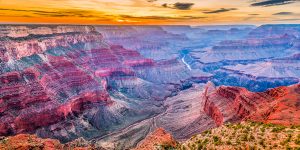Frequenting state and national parks is one of my all-time favorite things to do. Whether we go hike the Grand Canyon, Saguaro National Monument, Coronado National Forest, Zion, Banff, The Blue Ridge Parkway, Yellowstone, kayaking and back country camping in the Tetons, I’m refreshed; “Re-created” in this recreation.
When my family and I go out in nature we find that there are very few if any of my culture or hue present in the great outdoors. Why is this? Are there roadblocks for minorities to nature as there is in many aspects of our daily lives? When we do see someone of our hue or culture, you know we are sure to acknowledge each other in one way or another. You can presume my surprise and excitement when I noticed a poster in the Whitman Mission National Historic Site in Washington State entitled, Heroes of the Great Outdoors by Erin Wilson that depicted 10 people of color! I had no idea of any of these people nor their contributions to this land - America! This poster honors the black and brown people who have been working for years, sometimes decades, to preserving our environment and encourage all people to explore them. The poster was created for an article, It Matters Who You See in Outdoor Media in Outside Magazine by Carolyn Finney.
Contributions, service, and love of nature of Blacks here in the United States are numerous although much is not widely known. For instance, did you know that the Buffalo Soldiers were some of the first Park Rangers? That some National Parks were land donated from Black individuals?
Listed below are a few resources we have that you can check out for further exploration.
By the way, April 20-28, 2019 is National Park Week and July is Park & Recreation Month. The National Park Service has 5 days in a year where you and your family can enter a National Park free of charge; April 20th is one such day. Enjoy!
See the entire African Americans in the Great Outdoors book list
Articles for further reading:
Buffalo Soldiers were among the first park rangers


